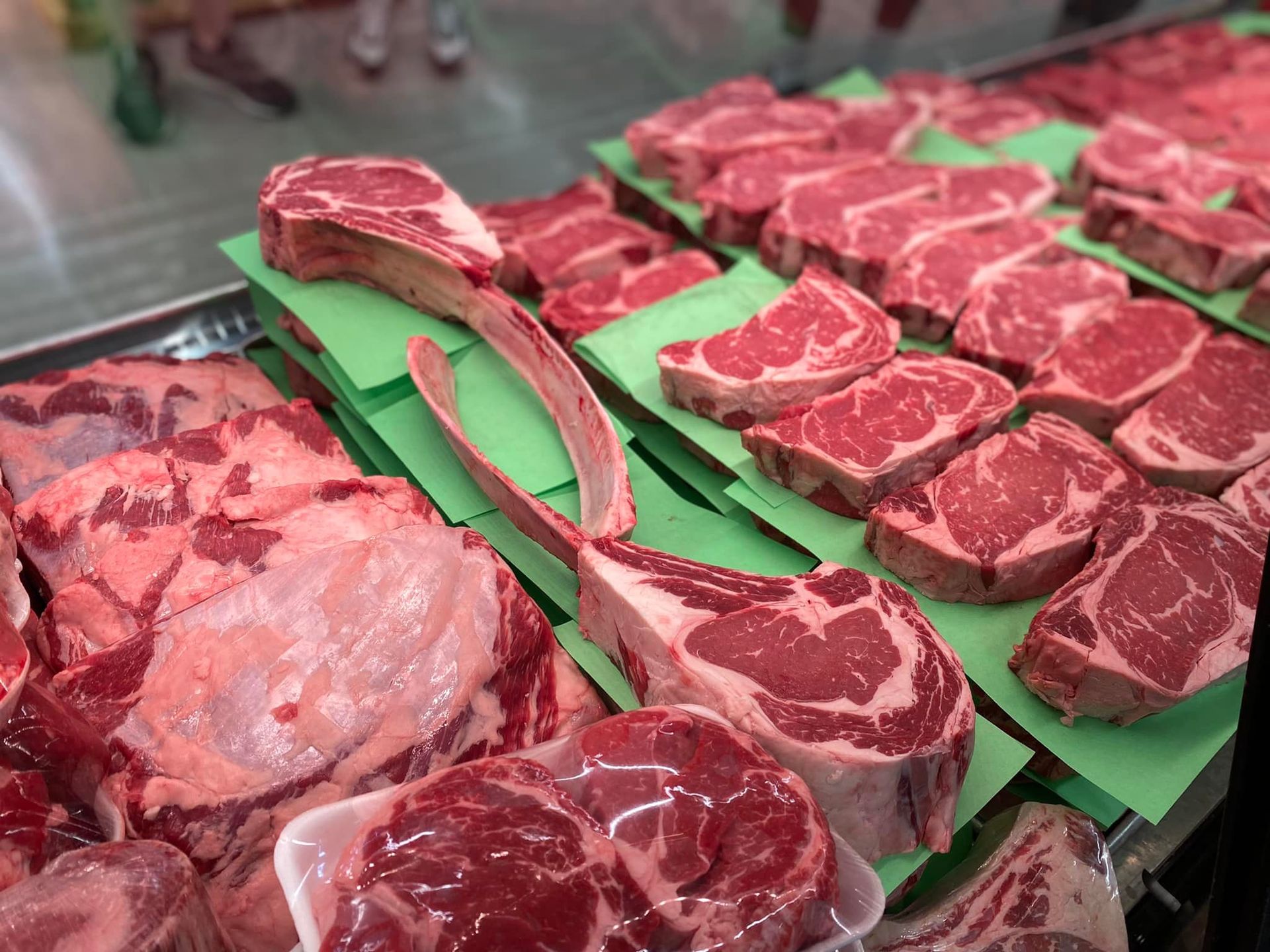Get fresh and local meats from Bagley Meat Market Edwardsville IL for your gathering.
Get fresh and local meats from Bagley Meat Market Edwardsville IL for your gathering.
Blog Article
How to Choose the Perfect Cut of Meat From a Trusted Meat Market
Selecting the optimal cut of meat from a trusted meat market needs a thoughtful approach that stabilizes quality, culinary function, and budget. Comprehending the various sorts of meat and their respective cuts is vital, as is involving with your butcher to gain insights right into sourcing and preparation. Observing qualities such as color, texture, and marbling can even more direct your decision. As you consider these aspects, it ends up being clear that the nuances of your option can substantially affect the outcome of your meal, motivating a deeper exploration of the standards that truly matter.
Recognizing Meat Cuts


For example, the tenderloin is treasured for its buttery structure and marginal connective tissue, making it perfect for fast cooking methods such as cooking or pan-searing. On the other hand, harder cuts like the brisket or shank benefit from slow-moving cooking strategies to damage down collagen, producing abundant and tasty outcomes.
Additionally, the fat web content of a cut plays an important role in taste account and moisture retention throughout food preparation. Cuts with higher fat web content, such as ribeye, provide a more robust taste, while leaner options, like sirloin, might require cautious prep work to avoid dry skin (bagley meat market edwardsville il). Comprehending these subtleties permits informed choices that raise cooking creations, ensuring that each recipe showcases the best top qualities of the picked meat
Elements to Take Into Consideration
When selecting the ideal cut of meat, numerous crucial aspects enter into play that can significantly affect the last dish. Primarily, think about the kind of meat you want-- beef, pork, lamb, or poultry-- as each offers unique tastes and appearances. The specific cut within that category is equally important; for circumstances, ribeye supplies rich marbling, while tenderloin supplies a lean, buttery structure.
One more aspect is the food preparation technique you prepare to utilize. Cuts appropriate for barbecuing, such as T-bones or sirloins, vary from those much better fit for slow food preparation, like chuck roasts or shanks. In addition, quality is extremely important; constantly pick meat with a lively shade and company appearance, signifying quality and proper handling.
Premium cuts may use extraordinary taste, but there are additionally affordable options that, when prepared properly, can yield scrumptious results. Balancing these variables will aid you choose the excellent cut for your culinary needs.
Inquiries to Ask Your Butcher
A butcher's proficiency can be indispensable when picking the perfect cut of meat for your cooking undertakings. Beginning by asking regarding the resource of the meat.
Next, inquire about the various Homepage cuts readily available for the sort of meat you favor. An experienced butcher will certainly explain the nuances of each cut, assisting you select one that matches your food preparation method and preferred end result. Don't be reluctant to ask see this about the most effective cooking techniques for a details cut; butchers often have pointers that can enhance your meal.
It's also sensible to ask regarding the meat's freshness. A good butcher will be anxious to share their knowledge and suggest cuts that will certainly thrill your taste buds. Engaging your butcher with these concerns can substantially enhance your meat selection experience.
Identifying Top Quality Meat

Structure is one more important variable; quality meat should feel solid and somewhat bouncy to the touch. Stay clear of any cuts that feel slimy or excessively dry, as these can indicate putridity or incorrect storage space. In addition, scent plays a vital role; fresh meat should have a clean, neutral scent, while any repulsive or sour odors are warnings.
Last but not least, consider the resource. Buying from a trustworthy meat market, where the meat's beginning is recognized, can ensure greater top quality criteria. By concentrating on these signs-- color, marbling, structure, smell, and source-- you can why not try these out confidently select cuts that will certainly boost your cooking and dining experience.
Cooking Approaches for each and every Cut
Picking the right cooking method is vital for taking full advantage of the taste and tenderness of each cut of meat. Different cuts have unique characteristics that dictate the most suitable food preparation methods.
For tender cuts, such as filet mignon or ribeye, dry warmth techniques like cooking, broiling, or pan-searing are perfect. These strategies enhance the natural tastes while ensuring a juicy, succulent texture. On the other hand, tougher cuts, such as chuck or brisket, benefit from damp warmth approaches, including braising or sluggish food preparation. These strategies help break down connective tissues, causing a tender, savory recipe.
Pork chops and chicken breasts are versatile and can be cooked utilizing both dry and damp techniques. While barbecuing or roasting can generate scrumptious outcomes, poaching or sautéing can keep moisture and inflammation. For lamb, methods like roasting or braising are recommended, as they match the meat's durable flavor.

Verdict
In final thought, selecting the excellent cut of meat from a reputable meat market necessitates a thorough understanding of meat cuts and factor to consider of numerous aspects, including resource, high quality, and food preparation methods. Involving with the butcher through targeted questions can yield useful insights and suggestions tailored to particular cooking requirements. Prioritizing both high quality and budget will boost the overall gastronomic experience, making certain that the picked cut satisfies assumptions in both flavor and preparation.
Report this page